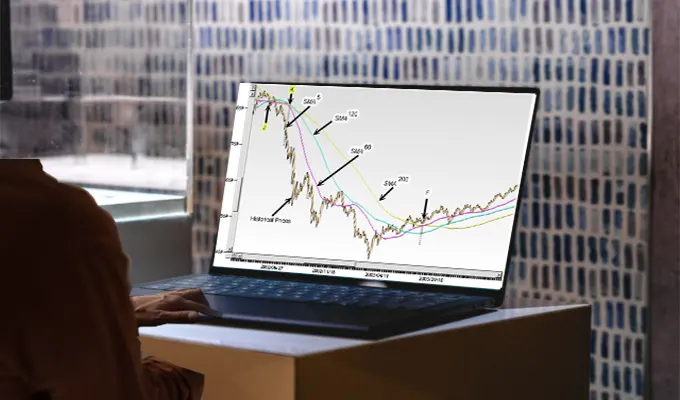Mutual funds are investment vehicles that pool money from various investors to purchase a diversified portfolio of stocks, bonds, or other securities. In Singapore, mutual funds play a significant role in the portfolios of elite investors due to their potential for growth, diversification, and professional management. These funds provide access to various asset classes and investment strategies that might be difficult for individual investors to achieve independently.
The Mechanics of Market Timing
Market timing refers to the strategy of making buy-or-sell decisions about financial assets by attempting to predict future market price movements. This approach contrasts with the buy-and-hold strategy, where investors maintain their investments regardless of market fluctuations. Historically, market timing has evolved as sophisticated analytical tools and real-time data have become more accessible, allowing investors to make more informed decisions.
Advantages and Drawbacks
The primary advantage of market timing is the potential for higher returns. Successful market timing can enable investors to capitalize on market upswings and avoid downturns. However, the risks are significant. Mistimed decisions can lead to substantial losses, and the costs associated with frequent trading can erode gains. Moreover, consistently predicting market movements is notoriously difficult, even for experienced investors.
Market Timing vs. Long-Term Investing
While long-term investing emphasizes holding investments over an extended period to ride out market volatility, market timing seeks to exploit short-term price movements. Each approach has its merits. Long-term investing benefits from compound growth and reduced trading costs, while market timing can yield higher short-term gains if executed correctly. Elite investors might find a hybrid approach, blending long-term holds with strategic timing, to be the most effective.
Influential Factors in Timing Mutual Funds
Understanding economic indicators is crucial for market timing. Key indicators include GDP growth, inflation rates, and unemployment data. A growing GDP typically signals a healthy economy, potentially boosting stock markets. Conversely, high inflation can erode purchasing power, negatively impacting investments. Unemployment rates provide insights into economic health and consumer spending. Elite investors use these indicators to gauge market conditions and inform their timing strategies.
Market Sentiment and Psychological Factors
Market sentiment reflects investors’ overall attitude towards a particular market or security. Sentiment can be measured using tools such as the VIX (Volatility Index), which gauges market volatility, or through investor surveys. Psychological factors, like herd behavior and investor emotions, also play a significant role. Understanding these elements helps investors anticipate market movements and adjust their timing strategies accordingly.
Interest Rates and Central Bank Policies
Interest rates, influenced by central bank policies, directly affect mutual fund performance. When central banks, such as the Monetary Authority of Singapore, adjust interest rates, it impacts borrowing costs, consumer spending, and investment returns. Rising interest rates can lead to higher bond yields but may negatively affect stock prices. Elite investors monitor these changes closely to time their entries and exits effectively.
Precision Timing Strategies for the Elite Investor
Technical analysis uses historical price data and trading volume to predict future price movements. Tools like moving averages, relative strength index (RSI), and Bollinger Bands help identify trends and potential reversal points. By analyzing charts and patterns, elite investors can decide when to buy or sell mutual funds.
Fundamental Analysis
Fundamental analysis evaluates a mutual fund’s underlying assets, financial health, and performance metrics. Key metrics include the fund’s expense ratio, turnover rate, and historical returns. Assessing these factors helps investors determine the intrinsic value of a fund and make timing decisions based on its potential for long-term growth.
Quantitative and Algorithmic Models
Quantitative models use mathematical and statistical methods to predict market movements. Algorithmic trading employs computer algorithms to execute trades based on predefined criteria. These strategies can process vast amounts of data quickly, identifying patterns and opportunities that might be missed by human analysis. While powerful, these models require sophisticated technology and expertise.
Integrative Strategies
An integrative approach combines technical, fundamental, and quantitative analyses. By blending these methods, investors can create a more comprehensive strategy. For example, technical analysis can identify entry points, fundamental analysis can validate the investment’s potential, and quantitative models can optimize timing and execution.
Implementing Precision Timing in Your Portfolio
Developing a timing strategy involves setting clear objectives, determining risk tolerance, and selecting appropriate tools and techniques. Elite investors should establish entry and exit criteria, define their investment horizon, and set realistic performance targets. A well-crafted plan ensures disciplined and consistent decision-making.
Leveraging Technology and Tools
Advanced tools and platforms can enhance timing strategies. These include trading software, financial news services, and analytical platforms that provide real-time data and alerts. Features include customization options, user-friendly interfaces, and robust data analysis capabilities. Leveraging these tools can improve accuracy and efficiency.
Conclusion
Timing mutual fund investments requires a blend of technical, fundamental, and quantitative analyses. Elite investors can make informed decisions that enhance their returns by understanding economic indicators, market sentiment, and global events. Advanced tools and continuous monitoring further refine these strategies.
By integrating these strategies and insights, elite investors in Singapore can achieve higher precision in their mutual fund investments, maximizing returns and minimizing risks. For advanced trading strategies and tools, elite investors often turn to brokers like Saxo, which offer comprehensive solutions tailored to sophisticated trading needs.










